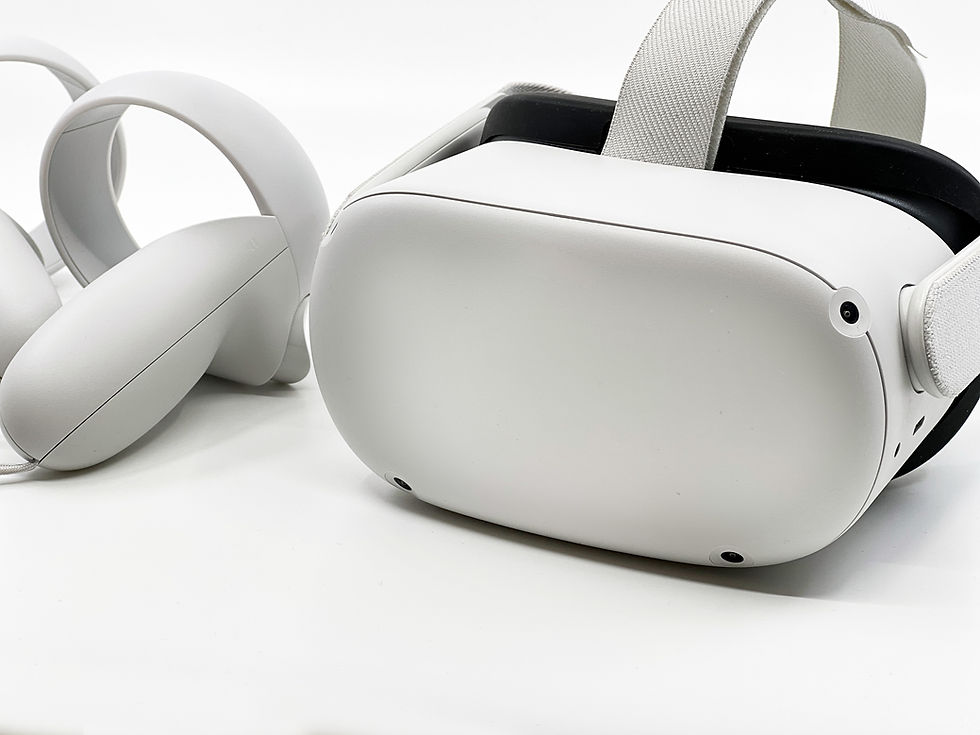Navigating Virtual Realities: Challenges of VR Headsets and the Role of MDM Software
- Mark Cullens
- Jan 10, 2024
- 2 min read
Updated: Jan 29, 2024
Virtual Reality (VR) has undeniably revolutionised the way we interact with digital content, offering immersive experiences that blur the lines between the real and the virtual. However, the widespread adoption of VR headsets comes with its fair share of challenges.
From technological limitations to user management concerns, addressing these hurdles is essential for the seamless integration of VR into various industries. In this blog post, we will explore the challenges associated with VR headsets and how Mobile Device Management (MDM) solutions play a crucial role in overcoming these obstacles.

1. Technical Limitations of VR Headsets:
VR headsets, while providing immersive experiences, often come with technical limitations. Issues such as limited battery life, restricted field of view, and the need for powerful hardware can hinder the widespread adoption of VR technology.
The Role of MDM Software
MDM solutions can assist in optimizing and managing the technical aspects of VR headsets, ensuring that they operate efficiently and reliably.
2. Managing Content Accessibility and Control on VR Headsets:
Managing and controlling the content accessed through VR devices is a significant concern, especially in educational and corporate settings.
The Role of MDM Software
MDM solutions enable administrators to regulate and monitor the content available on VR headsets, ensuring that users are exposed to appropriate and relevant material.
3. VR User Training and Onboarding:
The integration of VR in sectors like education and workforce training requires effective onboarding and training programs.
The Role of MDM Software
MDM solutions can streamline the process by remotely managing user profiles, providing tutorials, and ensuring that users are well-acquainted with the functionalities of their VR headsets.
4. Security and Data Privacy:
VR devices store and process sensitive user data, raising concerns about security and data privacy.
The Role of MDM Software
MDM solutions can implement robust security measures, such as encryption and remote wipe capabilities, safeguarding user information and mitigating the risks associated with potential data breaches.
5. VR Device Management and Updates:
Regular updates and maintenance are crucial for the optimal performance of VR headsets.
The Role of MDM Software
MDM solutions simplify the process by remotely managing firmware updates, troubleshooting technical issues, and ensuring that all devices are running the latest software versions.
6. User Experience and Comfort in VR:
VR users may face challenges related to comfort, motion sickness, and ergonomic issues.
The Role of MDM Software
MDM solutions can aid in tailoring user experiences by allowing administrators to customize settings, implement comfort measures, and address individual user preferences, ultimately enhancing the overall VR experience.
7. Cross-Platform Compatibility:
The diverse landscape of VR hardware and platforms poses challenges in terms of compatibility and standardization.
The Role of MDM Software
MDM solutions can bridge the gap by offering cross-platform support, enabling seamless integration of various VR devices within an organisation.
Conclusion:
While the challenges of using VR headsets are undeniable, the implementation of Mobile Device Management solutions emerges as a powerful tool to navigate and overcome these hurdles. As the VR landscape continues to evolve, the synergy between cutting-edge technology and robust management solutions will pave the way for a more accessible, secure, and immersive virtual reality experience.
Background on Digital Energy
We work closely to provide organisations with VR software combined with pre-configured VR headsets and deployment support. We offer a variety of headsets and accessories including Meta Quest and PICO NEO 3 Pro configured with ArborXR MDM software on-site training. Please see our case studies.




Comments